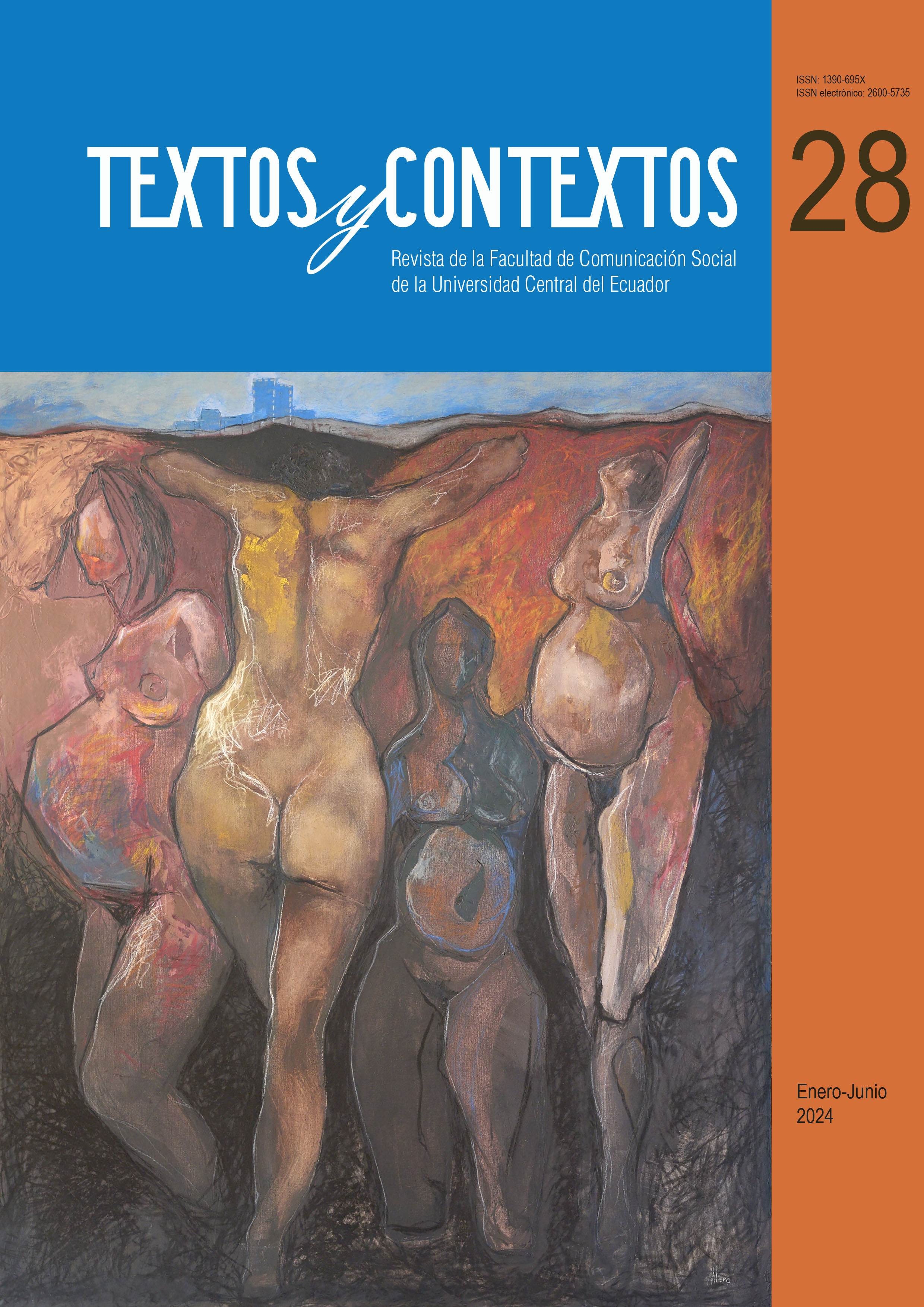La imagen como conteo y el valor performativo de las cifras La representación numérica de la violencia
Main Article Content
Abstract
For over a decade, authors such as Michael Friendly and Alain Badiou have critically pointed out the centrality of numbers within the representation of all aspects of contemporary material reality. Violence, in particular, has come to be quantified in several ways, and to be communicated and narrated through statistical visualization strategies already familiar to everyone. Talking about the ‘number of victims’, ‘survivors in total’, ‘how many massacres’, among many others, seems to be a normal, even preferred way to account for violence in its multiple forms. Far from denying the value of statistics within certain contexts, this text seeks to question this increasingly widespread tendency to account for violence only through numbers and numerical representations. Following a reflection on the relationship between figures and images, I propose a critical approach towards numerical representations, highlighting how images have assumed the logic of numerical counting, directly or indirectly. Using the case of the Colombian conflict as a starting point, the text intends to open the possibility of a non-numerical count through images, and to imagine what other forms of counting can be produced and deployed, without reducing the violence to a numerical problem.
Downloads
Metrics
Article Details

This work is licensed under a Creative Commons Attribution-NonCommercial 4.0 International License.
References
- Badiou, A. (2008). Number and Numbers. Cambridge: Polity Press.
- Bruzzi, S. (2009). New Documentary, Nueva York: Routledge.
- Blue M. (2016), “Objetos pendiendo la memoria. Reseña a la obra de Doris Salcedo”, en Arte y Memorias, https://arteymemoriaslatinoamericanas.wordpress.com/2016/07/12/objetos-pendiendo-la-memoria-resena-a-la-obra-de-doris-salcedo/
- Bolaño R. (2011). 2666, Barcelona: Anagrama.
- Burch, N. (1987). El tragaluz del infinito: contribución a la genealogía del lenguaje cinematográfico, Madrid: Cátedra.
- Comolli, J. L. (2011). Cine contra espectáculo seguido de Técnica e ideología, Buenos Aires: Manantial.
- Douard, J. W. (1995). “E.-J. Marey’s Visual Rhetoric and the Graphic Decomposition of the Body”, en Studies in History and Philosophy of Science, pp. 175-204. DOI: https://doi.org/10.1016/0039-3681(94)00039-C
- Friendly, Michael (2008). “The Golden Age of Statistical Graphics”, en Statistical Science, Vol. 23, No. 4, pp. 502-535. DOI: https://doi.org/10.1214/08-STS268
- Flusser, V. (2017). El universo de las imágenes técnicas. Buenos Aires: Caja Negra.
- Gitelman, L. (2013). “Raw data” is an Oxymoron, Cambridge: The MIT Press.
- Gitelman L. y Jackson, V. (2013). “Introduction”, en Gitelman, Lisa (ed.). “Raw data” is an Oxymoron, Cambridge: The MIT Press. DOI: https://doi.org/10.7551/mitpress/9302.001.0001
- Godard, J. L. (1998). “Propos rompus”, en Jean-Luc Godard par Jean-Luc Godard, Tomo 1: 1950-1984, París: Cahiers du cinema.
- Godard, J. L. (Director). (1965). Alphaville, une étrange aventure de Lemmy Caution [película]. Athos Films.
- Godard, J. L. (Director). (1998). Histoire(s) du cinema [película]. JLG Films – Gaumont.
- Green, J. F. (2006). “This reality which is not one: Flaherty, Buñuel and the Irrealism of Documentary Cinema”, en Docufictions. Essays on the Intersections of Documentary and Fictional Filmmaking, Carolina del Norte: McFarland & Company, pp. 64-87.
- Hacking, I. (2006). La domesticación del azar. Barcelona: Gedisa.
- Matuszewski, B. (2012). “Una nueva fuente de historia: la creación de un archivo para el cine histórico”, en Revista Cine Documental, No. 5. http://revista.cinedocumental.com.ar/5/traducciones_01.html
- Morelo Martinez, G. (5 de Agosto de 2018). “Así se construyó la base de datos más grande del conflicto colombiano”. El Tiempo. https://www.eltiempo.com/datos/asi-se-construyo-la-base-de-datos-mas-grande-del-conflicto-colombiano-251668
- Nichols, B. (1997). La representación de la realidad. Barcelona: Paidós.
- Oubiña, D. (2009). Una juguetería filosófica: cine, cronofotografía y arte digital. Buenos Aires: Manantial.
- Periot, J. G. (2007). Interview about Nijuman no Borei (200 000 Phantoms). Jean-Gabriel Periot.net. http://www.jgperiot.net/TEXTES/ENG/07/ENG%2007%20PUNTO%20DE%20VISTA%20itw%20200.html
- Sánchez, C. (2010), Las cifras de la guerra y la guerra de las cifras: la política de las estadísticas del conflicto armado colombiano. Departamento de Ciencia Política, Documentos Ceso N.° 178. Bogotá: Ediciones Uniandes.
- Weinrichter, A. (2005). Desvíos de lo real. El cine de no ficción, Madrid: T&B editores.
- Wernimont, J. (2018). Numbered lives: life and dead in quantum media, Cambridge: The MIT Press. DOI: https://doi.org/10.7551/mitpress/11455.001.0001




